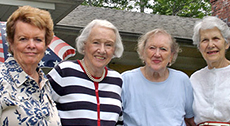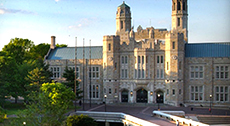For the better part of a century, this historic campus has been dedicated to service—service not only on behalf of the students and scholars who have both studied and worked here or the ever-changing community around it, but also for the nation and yes, even the world.
During the dark days of World War II, this campus was the training ground for the WAVES—Women Accepted for Voluntary Emergency Service—marking the first time women could serve in our nation’s military. Soon after, the United Nations, seeking to build a new world in the chaos of the post-war period, began its noble quest for human rights, peace, and the rule of law for all, right here in what was then the Gymnasium Building.
Since it was first constructed in 1931, this campus has been a destination for those seeking knowledge; first as a home for the uptown branch of Hunter College, and for the last forty-three years, home to Herbert H. Lehman College, where we have built upon the traditions of the campus and further expanded the City University of New York’s mission in the Bronx.
Since 1968, Lehman has provided the gateway to a better life for more than 62,000 alumni. Old and young, American-born and immigrants, and members of every race and religion have walked through our doors, strolled our tranquil green walkways, and studied within both the buildings we inherited and the new ones we have added — and are still adding — to this historic campus.
Strong History, Promising Future: Looking Back Over 80 Years of Public Higher Education in the Bronx
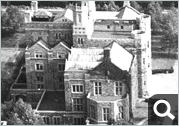
September 1931: Opening of the Campus
Hunter College, then known as the Normal College, opens the first of four Gothic-style buildings-Gillet Hall. Plans for Greek temples complete with Doric columns originally inspired the campus design, but plans are scaled back by the 1929 Stock Market Crash. Construction on the remaining three buildings-Davis Hall, the Gymnasium (now called the Old Gym Building), and the Student Building Student Hall (now the Music Building)-is finished by 1934.
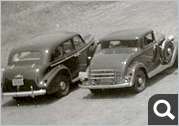
May 29, 1940: Opening of Lehnert's Rock Garden
A large rock garden is dedicated in memory of Professor Edward M. Lehnert, chair of the Department of Geology and Geography from its inception in the 1920s. Besides being a quiet and special spot on the campus cherished by students, the garden served as an outdoor laboratory for the College's science students. Located north of Gillet Hall, it originally measured 106 by 68 feet and featured a reflecting pool filled with goldfish and turtles, a dozen rock benches, and nearly 200 rock and mineral specimens.
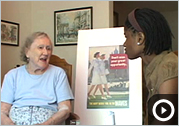
February 1943: The WAVES Report for Duty
With the United States entry into World War II, President Franklin D. Roosevelt institutes a new division of the Armed Forces-the WAVES (Women Accepted for Voluntary Emergency Service)-marking the first time that women are able to serve in the American military. For three years, nearly 81,000 women are trained on the campus as decoders, navigators, and mechanics.
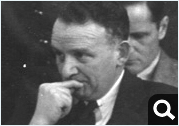 .
.
.
.
.
.
.
.
.
.
.
.
.
.
March 25, 1946: The United Nations Moves to the Bronx
After two world wars in twenty-five years, the United Nations was an idea whose time had come. While searching for more permanent accommodations, the nascent U.N. settles on the Bronx campus, with the Gym Building transformed into the chambers of both the U.N. Security Council and the Economic and Social Council. The campus becomes the "diplomatic center of the universe," as the U.N. deals with crises in Iran, Greece, Spain, Indonesia, Syria, and Lebanon. Work begins in a newly created Division of Human Rights, led by Eleanor Roosevelt, which eventually culminates in 1948 in the Universal Declaration of Human Rights.
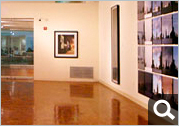 .
.
.
.
.
.
.
.
.
.
.
.
1959/1960: Opening of the Fine Arts Building and Shuster Hall
These buildings, both designed by Modernist master Marcel Breuer, mark the first additions to the campus since it opened in 1931. The pair at first forms a larger complex that includes classrooms, a library, and a shared architectural exterior. Then in 1972, Shuster Hall is remodeled into Lehman College's administration building. A decade later, in 1983, the library exterior is remodeled with black glass and becomes the home for the College's Art Department and Art Gallery. Now, the Fine Arts Building hosts 11,000 visitors each year and is a leading art space in the Bronx.
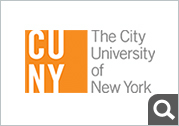
April 11, 1961: CUNY is Born
The City University of New York is created. With the stroke of Governor Nelson A. Rockefeller's pen, New York's seven-college municipal higher education system, with new Ph.D. - granting authority, is organized into one interconnected organization. Although the University can trace its roots back to 1847, when the Free Academy was founded, CUNY - then the nation's largest public university system-marks a significant moment in the history of higher education in New York City. The mission of the University - to educate 'the children of the whole people' - continues to this day, a half century later.
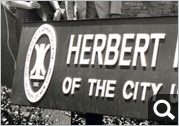
July 1, 1968: Establishment of Lehman College
Following a twenty-minute ceremony, Herbert H. Lehman College comes into existence, the first — and still the only — CUNY senior college in the Bronx. Dr. Leonard A. Lief, a faculty member in the English Department when the campus was Hunter-in-the-Bronx, becomes its first President, a position he holds for more than twenty years. A new campus library, opened in 1980, is dedicated in his honor in May 2006.
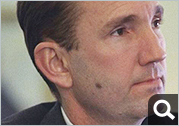 .
.
.
.
.
.
.
.
1970: Inauguration of the Herbert H. Lehman Memorial Lecture Series
Former U.S. Attorney Ramsey Clark is the first speaker. He will be followed in later years by a variety of distinguished men and women from the arts, government, education, and international affairs, including several former U.S. Senators and college presidents.
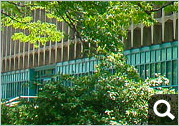 .
.
.
.
.
.
.
.
.
.
1971: Opening of Carman Hall, the College's Principal Classroom Building
The building houses classrooms, offices, and lecture halls for more than a dozen academic departments. In 1999, a state-of-the-art Information Technology Center is added, featuring nine microcomputer classrooms, an open lab area with over 100 microcomputers, and "Sonic Pass Blue," a work of public art by sound artist Christopher Janney that transforms a walkway into a "synaesthetic environment" capturing the interaction between sounds and pedestrians.
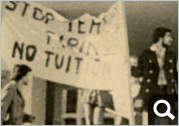
1976: Campus Closed by Student Protests
As New York City teeters on the brink of financial disaster, life on all CUNY campuses is affected, including a halt to construction projects at Lehman. Students protest demands for the imposition of tuition-a first for CUNY-and several buildings are seized. In response, President Lief closes the campus.
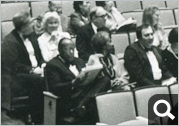
1980: Opening of Lehman Center for the Performing Arts
A performance by the New York Philharmonic opens Lehman Center for the Performing Arts. Designed by Jan Hird Pokorny and David F.M. Todd & Associates, the Center is the largest concert hall in the Bronx with seating for over 2,300 visitors. Critics hail its performance space as "acoustically perfect," and over the next three decades it becomes a premiere cultural destination, offering a range of programming from classical music and jazz to pop concerts.
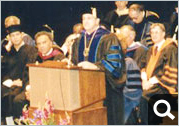
1990: Dr. Ricardo R. Fernández becomes President of Lehman College
Dr. Ricardo R. Fernández becomes the College's second President. Under his leadership, Lehman adds a wide array of new majors and graduate programs, vastly overhauls its technological capabilities, and greatly expands its outreach to the Bronx community, especially its schools.
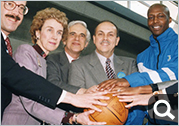 .
.
.
.
.
.
.
.
.
.
.
.
.
.
.
.
.
.
.
.
.
.
.
.
.
.
.
.
1994: Opening of The APEX
Designed by Rafael Viñoly Architects PC, The APEX houses an Olympic-sized swimming pool, gymnasium and auxiliary gymnasium, racquetball courts, dance studios, weight and aerobic rooms, classrooms, and the Lehman Athletic Hall of Fame. Outside its doors are tennis courts, refurbished in 2010 with the same court surface that graces center court at Arthur Ashe Stadium, home to the U.S. Open.
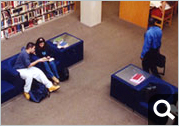 .
.
.
.
.
.
.
.
.
.
.
.
May 4, 2006: Naming of Leonard Lief Library
The College Library is named in honored of President Emeritus Leonard Lief, the founding president of Lehman College (1968-1990). The plaque that is unveiled during the ceremony praises him for shaping the College's "faculty, curriculum, and its very surroundings. Through national political turmoil and restraints imposed by a severe fiscal crisis, he persevered with an enlightened, inclusive vision of higher education that still inspires the College today."
 .
.
.
.
.
.
.
.
.
.
.
.
.
.
.
.
.
.
April 23, 2010: Dedication of the Multimedia Center and Lehman Studios
Nestled in the basement of Carman Hall, Lehman College's Multimedia Center is the first state-of-the-art facility of its kind in the Bronx. The $16 million, 22,000-square foot facility includes graphic workstations for art students; an all-digital newsroom and custom-built broadcasting studio for the Multimedia Journalism students; eight rooms of editing suites; and a computerized music studio for filming and recording. The facility also provides a new home for filmmakers, digital artists, producers, and musicians who need access to a twenty-first-century facility.
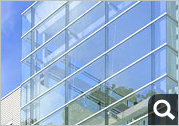 .
.
.
.
.
.
.
.
2012: Science Building
After four years of construction, Science Hall, the College's new state-of-the-art research and teaching facility, is dedicated in a ceremony attended by CUNY officials and the Bronx Borough President Ruben Diaz, Jr., a proud Lehman alumnus.
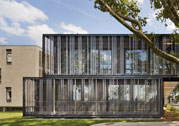
2013: Child Care Center
The Child Care Center, a modular building. It will meet the childcare needs of students and staff alike, providing a safe and nurturing learning environment for the child of both students and staff alike.
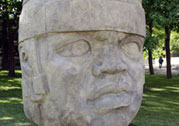
2014: Lehman College receives a statue of "The King"
Lehman College receives a statue of "The King" a replica of an Olmec Head, a gift from Mexico to celebrate the first anniversary of the Jaime Lucero Mexican Studies Institute.
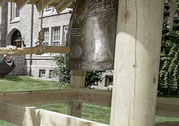
2015: The Lehman College Peace Bell
The Lehman College Peace Bell, inspired by President Fernandez's trip to South Korea, is unveiled in a ceremony on campus. The bell is a generous gift by Mr. Yong Lee, a friend of the College, and his family..

2015: President Barack Obama arrives at Lehman College on May 4
President Barack Obama arrives at Lehman College on May 4 to launch My Brother's Keeper Alliance, a nonprofit, aimed at helping at risk young urban males to stay in school.

2016: United Nations Secretary-General Ban Ki-moon delivers the 47th Annual Herbert H. Lehman Memorial Lecture
United Nations Secretary-General Ban Ki-moon delivers the 47th Annual Herbert H. Lehman Memorial Lecture, making him the second Secretary-General to visit Lehman College.
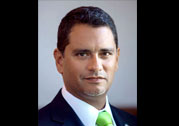
June 6, 2016: Dr. José L. Cruz Is Appointed Lehman College’s Third President
Dr. José Luis Cruz is President of Lehman College of The City University of New York. Dr. Cruz was appointed as Lehman's third President by the CUNY Board of Trustees in June 2016 and began his tenure on August 15, 2016. Prior to his appointment at CUNY, President Cruz served as Provost and Vice President for Academic Affairs at California State University, Fullerton; Vice President of Higher Education Policy and Practice at The Education Trust in Washington, D.C.; Vice President for Student Affairs of the University of Puerto Rico system; and Chair of the Electrical and Computer Engineering Department and Dean of Academic Affairs at the University of Puerto Rico-Mayagüez.










